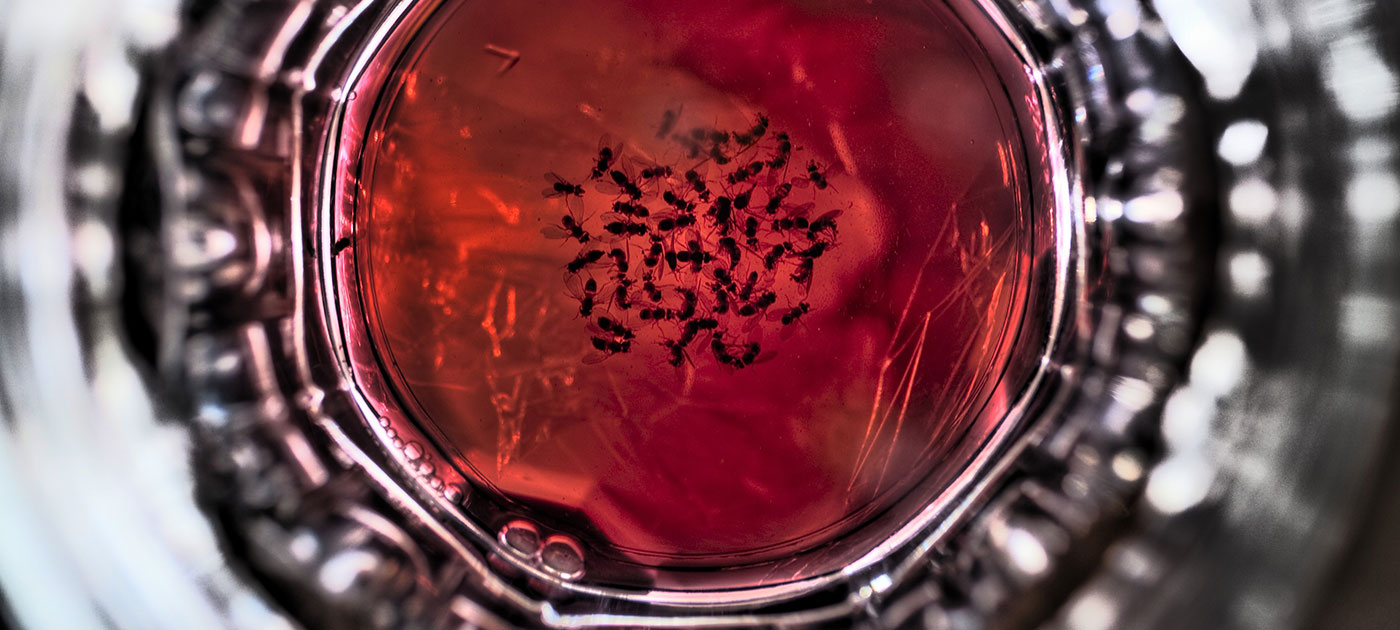IN BRIEF:
- Fragile X Syndrome is a genetic disorder that causes delayed developmental milestones, mild to moderate intellectual and behavioral disabilities, and anxiety disorders.
- Scientists have been able to use Drosophila, the common fruit fly, to test potential drug therapies.
When it took baby Greg over two years to say “mama” and much longer to take his first step, his parents knew something was wrong. Temper tantrums, seizures, and sleepless nights were the norm. A blood test finally revealed that the toddler has Fragile X Syndrome (FXS), a genetic disorder caused by a mutation on the X-chromosome that is the most common inherited form of intellectual disability. Clues to this syndrome, which manifests in a wide spectrum of behavioral and learning problems, may be buzzing overhead. The common fruit fly has genes similar to those responsible for causing FXS in humans, making this household pest the perfect partner for scientists searching for a cure for a disease that is also linked to autism. (Haldeman-Englert 2012).
[“Fragile x syndrome,” Wikimedia Commons. License: Free Art License]
According to the National Fragile X Foundation, FXS occurs in both males and females, but males are more frequently affected and generally with greater severity. While children like Greg are treated with physical therapy and medications, there is currently no cure for FXS. (Restifo 2014). However Drosophila melanogaster, the common fruit fly, is helping scientists test potential treatments.
Past research provided evidence that the genes responsible for Fragile X Syndrome are “remarkably similar between humans and fruit flies” (Restifo, 2005). These genes can be altered in the fruit fly to mimic the genetic mutation that causes FXS, making fruit flies a valuable tool in testing possible therapies. Researchers can easily monitor the functions of the Drosophila and examine potential cures for the disorder (Zarnescu, 2005). Not only is the fruit fly perfect for expressing a desired altered trait, it is also small and short-lived. Thus, researchers can observe large populations over multiple generations quickly and effectively.
For example, various studies using Drosophila have demonstrated that certain drug compounds, called “GpI mGluR antagonists,” can be injected into a fruit fly with FXS and relieve it of previous symptoms (Restifo, 2014). The GpI mGluR protein acts as a “fighter” that increases the amount of a protein known as FMRP that is missing in people suffering from Fragile X Syndrome. This research may hold great promise for patients like Greg, who must overcome a number of challenges in order to participate as much as possible in all aspects of daily life.
Works Cited
This article was written by cYw39. As always, before leaving a response to this article please view our Rules of Conduct. Thanks! -cYw Editorial Staff

![Physical features of Fragile X Syndrome can include a narrow face, large ears, and prominent jaw (National Library of Medicine). [“Fragile x syndrome,” Wikimedia Commons. License: Free Art License]](https://www.curiousyoungwriters.org/wp-content/uploads/2015/05/fragile-x-252x300.png)